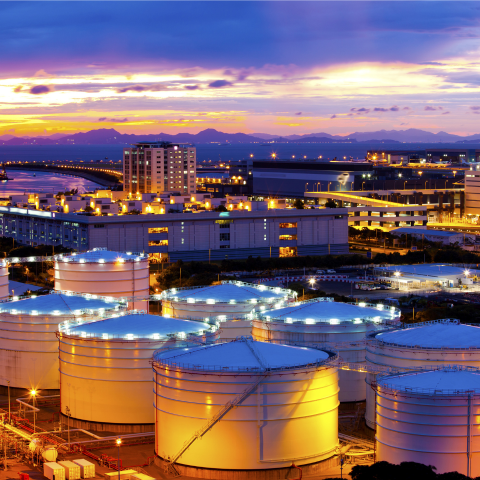Tank terminals play a pivotal role across various industries, serving as vital assets for storing substances like crude oil, biofuels, petrochemicals, tarmac, food products, and wastewater. Ensuring effective tank heating and insulation systems leads to reduced energy expenditures, decreased maintenance requirements, and an extended lifespan for both the tank structure and its critical contents.
Maintaining the correct temperature of temperature-sensitive fluids is crucial to keep your processes operational in a safe and energy-efficient manner. Inconsistent temperature management can trigger viscosity-related problems, causing the fluid to evaporate, solidify, crystallize, or even freeze. This obstruction hinders fluid flow during loading and unloading and can deteriorate the fluid quality itself, resulting in lost time and money. Furthermore, insufficient insulation against environmental factors like wind and rain exposes the metal tank structure to corrosion and potential rupture and will increase your energy bills drastically
Why Standing Seam Insulation Systems Are a Smart Choice
1. Easy and Quick Installation
Installing standing seam tank insulation is easier compared to traditional methods. Here’s why: the insulation panels are pre-fabricated indoors in a controlled, secure environment and are spanning up to 12 meters. On-site , these panels can be installed around the tank by a small crew using a simple height crane (cherry-picker). They are locked together, without the need for expensive scaffolding or lots of horizontal joints. This translates to significantly less time spent on-site and less risk for the workers.
2. Tough on Corrosion and Built to Last
Standing seam systems don’t back down from extreme weather. They can handle winds up to a whopping 170 miles per hour, whereas conventional insulation designs are vulnerable to stormy weather.
Standing seam panels are also built for the long haul. When using fully double-locked seams and a strong closed-cell insulation material (such as PIR), this insulation layer keeps water, wind, and other environmental elements from messing with the insulation. This is super important because compromised insulation can lead to a big problem known as CUI (corrosion under insulation).
And it doesn’t stop there. Some manufacturers take it a step further by adding a protective footer made from 100% hygroscopic cellular glass. This little hero eliminates the risk of corrosion from ground moisture and water collecting at the tank base.
3. Say Goodbye to Regular Maintenance Hassles
Standing seam systems have another ace up their sleeve: flexible rubber boots. These boots cover and protect the weak points where the tank sidewalls and roof meet. Unlike the rigid rivets used in traditional insulation, these boots move with the tank as it thermally expands and contract due to fluctuations in ambient or storage temperatures. This means no more need for constant manual tightening.
Sure, standing seam insulation systems still need an annual check of any sealed penetrations. However, compared to the high-maintenance demands of conventional systems, the cost savings on field maintenance are clear.
Boosting Efficiency and Saving Big with Tank Heating and Insulation
You might find that standing seam systems are a bit pricier upfront compared to traditional insulation systems. However, the extra dollars invested upfront in standing seam panels can lead to massive savings down the road, especially when it comes to energy usage.
Take this example: Imagine a tank terminal with 450,000 cubic meters of capacity that needs to stay at 60°C. Now, if you go the conventional route with mineral wool insulation, the installation will cost roughly €4,000,000 (including scaffolding costs). If you opt for a standing seam system, that price tag will be around €4,600,000.
But consider this. To keep that terminal steady at 60°C when it’s a chilly 12°C outside (average ambient temperature over the entire year), the traditional system would chug away with about 160 kilowatts of electricity. The standing seam system only needs 108 kilowatts. That’s a 32% reduction in energy use that adds up to a whopping EUR 320,000 in savings every year.
In less than two years, that extra cost paid for using PIR standing seam insulation is recouped, and year after year, the terminal is running more efficiently, reducing its environmental footprint.
What’s Next?
In contrast to many other fields of industrial technology, the world of industrial tank heating, insulation, and leak detection has remained fairly constant over the past 20 years, ever since the widespread introduction of standing seam systems.
But with careful consideration of the right type of heating, insulation, and leak detection needed for each application, not only can companies protect their staff, equipment, and profit margins, but they can also play a vital role in protecting the planet.
Ready to learn more about how nVent RAYCHEM can help your business reach sustainability goals? Connect with an expert today.


